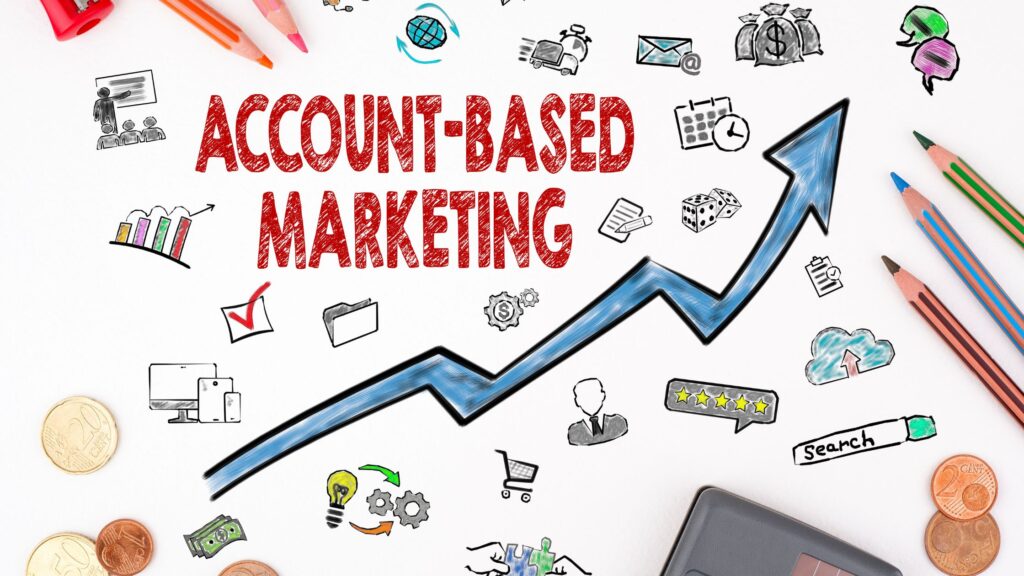The success of any B2B sales strategy hinges on the quality of the data used to reach potential clients. To get the most out...
“You have to tell a story before you can sell a story”, said Beth Comstock, the vice chair of General Electric (GE). This quote emphasizes the importance of storytelling in business and accurately captures the role and distinction between sales and marketing from a business standpoint.
“Marketing” involves crafting and conveying a compelling story, while “Sales” entails effectively selling that story to customers. However, many individuals use marketing and sales interchangeably, which hampers their ability to develop an effective B2B sales or marketing strategy.
According to research cited by SiriusDecisions, B2B organizations with a strong alignment between marketing and sales achieves 24% higher revenue growth and 27% faster profit growth over three years. This article will delve into the relationship between sales and marketing and explore why it is crucial for business growth.
The Power of Collaboration: Why Sales and Marketing Are the Two Sides of the Same Coin
When it comes to the business objective of taking care of customers, sales and marketing play distinct but interconnected roles. Many companies recognize the value of integrating these functions through a concept called “smarketing”. It is a combination of marketing and sales activities. Before exploring the benefits of smarketing, let’s first understand the marketing and sales funnel—a conceptual model that illustrates the customer’s journey from initial interest to final purchase or transaction.
The sales and marketing funnel consists of different stages that represent various interactions between the customer and the company.
For instance, when a potential customer visits your website and engages with content, what happens next?
In most marketing strategies, it is the marketing team’s responsibility to initiate the customer relationship. They use lead-generation tactics and marketing automation to identify leads who are ready to move into the sales funnel. Through consistent communication, the marketing team nurtures these leads, managing them as prospects.
Once the sales pipeline is filled with high-quality leads, the baton is passed to the B2B sales team. A lead routing strategy is employed to assign leads to the sales representative best suited to guide them toward a successful transaction. This routing can be based on factors such as location, deal size, or specific products and services.
By combining the efforts of sales and marketing, “smarketing” aims to streamline the sales and marketing funnel. This ultimately enhances the overall customer experience. It not only facilitates revenue generation but also improves customer retention for the business. Thus, the collaboration between the sales and marketing teams with a shared goal leads to better outcomes for both the company and its customers.
3 Tips to Align Your Marketing and Sales Team
Achieving a successful collaboration between marketing and sales is key to transforming leads into long-term revenue-generating accounts. By implementing the following three tips, you can unify your marketing and sales teams, ensuring they target the appropriate accounts and effectively communicate with every member of the buying committee, working in tandem.
1. Harnessing the Power of Account-Based Marketing (ABM)

One effective strategy in the digital marketing realm is account-based marketing (ABM). While 92% of B2B marketers have embraced ABM programs, 64% of them have adopted this approach within the last five years. ABM combines data management with marketing automation to create personalized campaigns specifically tailored to top B2B prospects. This strategy breaks down barriers between marketing and sales by integrating the entire buyer journey, from lead generation to the sales funnel.
An important advantage of ABM lies in its emphasis on engaging all members of an account’s buying committee. Customers today expect personalized engagement, with 59% expressing that tailored interactions based on past experiences are highly influential in their decision-making process. Achieving this level of personalization requires marketing and sales teams to collaborate and develop a strategy for identifying high-revenue-generating accounts. They must also personalize communication according to the unique needs and preferences of each account.
Furthermore, research from ITSMA reveals that around 85% of marketers who measure return on investment describe ABM as yielding higher returns compared to other marketing approaches. In an ABM strategy, marketing and sales join forces in account selection and commit to sharing insights and data to effectively connect with every buyer. B2B marketers engage with their B2B sales counterparts to understand their challenges and contribute to improving ideal customer profiles (ICPs) and implementing more targeted campaigns. Simultaneously, sales representatives share valuable customer insights with marketing, enhancing ICPs and supporting future ABM initiatives.
With a shared vision of the targeted accounts, marketing and sales teams become well-acquainted with these accounts and their buying committees. They gain knowledge of the content preferences and preferred channels of engagement. Additionally, these accounts can serve as templates for creating lookalike audiences, expanding the scope of ABM programs and identifying additional accounts that align with the business’s objectives.
By adopting an ABM approach to account selection and engagement, marketing and sales teams can foster a collaborative environment. This eliminates any conflicts and allows for the development of a cohesive strategy, leveraging all available insights to drive mutual success.
2. Integrating Marketing Automation and CRM
While account-based marketing (ABM) is just a strategy, the tools and technology utilized to implement ABM programs play a significant role in achieving success.
With an increasing number of customer interactions occurring in the digital marketing space, marketing automation has become a critical component of a company’s communication efforts. Furthermore, as businesses increasingly operate online, marketing analysts predict that B2B marketers will actively adopt marketing automation technologies. This helps facilitate better-targeted digital relationship building and engagement.
Marketing automation tools provide valuable assistance in identifying target audiences and delivering relevant, personalized content with minimal effort from marketers. These tools are experiencing rapid growth in popularity. For instance, 38% of marketers plan to increase their usage of marketing automation or account-based marketing platforms in the coming year.
Consequently, you can migrate marketing automation and customer relationship management (CRM) systems to a unified platform. This acts as one of the most powerful steps to align your sales and marketing teams, enhance their productivity, and deliver a seamless customer experience.
By integrating marketing automation and CRM, you can establish bidirectional synchronization, ensuring that any updates made in the CRM system are reflected in the marketing automation platform, and vice versa.
This unified approach to marketing technology streamlines processes and facilitates efficient information sharing between sales and marketing teams. It empowers both teams to work cohesively towards their goals, leveraging comprehensive and up-to-date data to provide a unified customer experience.
3. Understanding the Role of Constant Communication
Implementing any account-based marketing (ABM) strategy necessitates continuous communication between sales and marketing teams. In successful organizations, these teams collaborate, communicate, and work alongside each other to achieve their shared goals. If there are any existing divisions within your business, it is crucial to revisit your communication strategy.

Lack of communication between marketing and sales teams often results in missed revenue opportunities. Thus, maintaining constant communication becomes imperative. For instance, the marketing team can initiate a weekly memo to update the sales team on upcoming events, webinars, product announcements, and other available resources to foster engagement.
Open and transparent communication between marketing and sales serves as a linchpin for unified buyer engagement and maximization of each account’s potential. It establishes the groundwork for a robust cross-team relationship that, in turn, strengthens customer relationships. By fostering ongoing communication, both teams gain a comprehensive understanding of customer needs, market trends, and evolving business priorities. This knowledge enables them to adapt their strategies and approaches collaboratively, resulting in improved sales and digital marketing services and enhanced customer satisfaction.
Consistent communication also enables the identification of potential challenges and opportunities. This facilitates proactive problem-solving and strategic decision-making. Regular meetings, joint planning sessions, and shared reporting mechanisms foster a sense of shared responsibility and alignment toward achieving common objectives.
The Bottom Line
In summary, the fusion of sales and marketing is a game-changer for businesses aiming to excel in the B2B realm. Understanding that sales and marketing are two sides of the same coin empowers organizations to amplify their impact through seamless collaboration.
As a prominent B2B Sales and Digital Marketing company in Chennai, India, DealsInsight prioritize the alignment of our sales and marketing teams to leverage the business of our clients. By seamlessly integrating these facets, we harness the potential of digital platforms and implement personalized marketing approaches. This ultimately helps us drive sustainable growth and provide our clients with a competitive edge in the market.
Bring out the power of sales and marketing fusion, and partner with DealsInsight, to awaken your business potential and gain a competitive edge.




